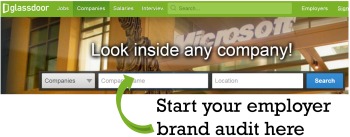 THERESA DEW
THERESA DEW
HNI HR Manager
Branding and HR aren’t something we often think of as going together. But as the war for talent rages on, we believe that focusing on employer branding will become more important than ever before.
The ultimate goal of an employer branding strategy is simple: to be known as a great place to work. Your firm wants to be the kind of organization that outsiders are attracted to and where key talent is committed to for the long haul. What better goal is there for HR and organizational leaders?
Employer Branding and the Impact It Can Make
Let’s start by defining "brand.” There are many definitions out there, but the one that rings most true to me is this: A brand is the gut feeling someone has about your organization. It's not what you say it is; it's what they say it is.
Building your reputation as a great place to work isn’t a one-and-done project — it takes sustained effort to move the needle on deep-rooted perceptions. To start, we recommend three things:
1. Do an Employer Brand Audit
Zero in on what employees and prospective employees think of your company. There are entire social networks devoted to sharing intel about this. Sites such as Glassdoor, Payscale, and Vault allow current and former employees to share their experiences — everything from impressions of senior leadership, to the culture, to how much their annual salary is. Job applicants also can share what their first impressions were like, how they were treated, and what interview questions they were asked.
Check these sites for what’s being said about your organization. Do a Google search on your company’s name and see what comes up. If you see something negative, don’t be alarmed — think about what you can do to address the concern, and consider adding some positive feedback. If there’s nothing out there, you may want to enlist employees in spreading the word about your company.
2. Make Friends with Marketing
While brand traditionally has been marketing’s turf, branding your company to talent isn’t so radically different from branding to prospective customers. In this area, HR and marketing have the same goals: to differentiate from the competition to attract, retain, and grow their targets.
Your employer brand is built through every touchpoint and communication with your current and prospective employees. Everything — from the application, to benefits communication, to the exit interview — is a chance to influence your brand image.
It’s time to bust some silos and enlist your marketing team’s help to ensure your communications are hitting home. A little creative treatment can go a long way! HR’s success here is marketing’s success, too, because at the end of the day, it’s happy, engaged talent who deliver satisfied, loyal customers.
3. Use Stories to Rally the Troops
Stories are one of the best ways to build an emotional connection to your company, which is what employer branding is all about. Paint a picture of how the work that your company does has an impact and how employees fit into something bigger than themselves. Engagement will skyrocket.
When it comes to benefits communication, this can be particularly effective. Rather than review the standard slide deck of your company’s offerings with a few annual updates, share how your benefits have affected one of your employees. Celebrating how Roberta was able to go back to school and finish her degree will be far more interesting and memorable than reviewing the tuition reimbursement policy again!
The Journey Starts Here
These three steps are just a few in the long journey to building an enviable employer brand. With qualified, eager talent in increasingly short supply, employer branding will most certainly play a prominent role in HR strategy.
How have you built your employer brand? What surprised you about how your brand is perceived by internal and external audiences? Please share in comments.
Related Posts:
Branding: The New Frontier of Risk Management
.png?width=69&height=53&name=Acrisure%20Logo%20(White%20Horizontal).png)

![[ GET THE WHITE PAPER ] Managing People Risk: The Human Side of the Equation](https://no-cache.hubspot.com/cta/default/38664/ff7d7fe0-59f9-46e3-b873-945fd120afbc.png)
